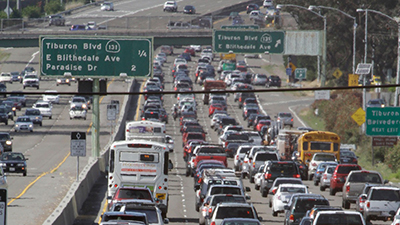SOMETHING CRAZY HAS happened in Marin. Groups with such names as Citizen Marin, Larkspur Fights Back and Marin Against Density, or MAD, have gained a foothold in county politics and it is a matter of serious concern. Why? Because much of what they say is highly debatable. And, I believe, what they are arguing against is what has made Marin, Marin.
In light of the antigrowth stance and for the sake of simplicity let’s collectively call these folks the Herbal Tea Party, or HTP.
Alternatively, Coalition for a Livable Marin, or CALM, has recently emerged to counter the claims the Herbal Tea Party has been putting forth over the past few years. Let’s look at a few examples.
HTP: High-density housing, such as 30 units per acre, will never be viable in Marin. CALM: “That’s just not true,” says solar energy executive David Kunhardt of Corte Madera, one of the founders of CALM. “Over 40 years ago, Marin made a conscious decision to concentrate development along Highway 101 in the City Center Corridor.” And, as Kunhardt points out, that’s why 82 percent of Marin’s land is now open space. Also, much of the City Center Corridor is high-density housing. In fact, two of Marin’s most popular senior housing projects have densities exceeding 30 units per acre: Greenbrae’s 11-story Tamalpais of Marin has more than 300 apartments on six acres for a density of about 50 units per acre, and The Redwoods in Mill Valley has 330 living quarters in 15 buildings, some three stories high, on a 10-acre campus, part of which is wetlands. “Do the math,” Kunhardt says. “That’s also over 30 units per acre.”
HTP: Traffic congestion on Highway 101 is reason enough for not developing one more property in Marin. CALM: “Actually,” says Wendi Kallins, a longtime Forest Knolls resident and a cofounder of CALM, “a case could be made for the exact opposite.” According to her, since 1970, Marin has grown only .7 percent per year. “That slow rate of growth didn’t produce today’s traffic,” she maintains. “Our 101 traffic consists of folks getting to homes they could afford in Petaluma; people from outside the county getting to and from their jobs in Marin; and Marin families doing errands in cars because they live distant from needed services.” Kallins’ point: Close-in Marin communities with transportation and services within waking or biking range, and at a price young working families could afford, might actually serve to reduce traffic. “Yet MAD now vehemently opposes such community-based, well thought out projects in Marinwood, San Rafael, Fairfax and Larkspur,” she says.
HTP: People won’t give up their cars in favor of walking, biking or taking public transportation. CALM: “It’s just the opposite,” Kunhardt says. “The realtors I talk to — Corte Madera’s Bob Ravasio is a good example — say the first thing family home buyers want to know is, ‘Will we be able to walk to school and into town?’ Whenever possible, young families now want to avoid using their cars.”
HTP: Placing close-knit communities, including workforce housing, next to transportation facilities is a newfangled idea that will never work. CALM: “My gosh,” says Kallins, “Mill Valley, San Anselmo, Fairfax, Sausalito, San Rafael and Tiburon — they all grew up as train or transportation stops. I don’t understand why some people are so against affordable, vibrant and walkable communities that have the services people need and want and that can be accessed without getting in a car.”
Personally, I believe Marin residents should think long and hard before allowing themselves to be led by people who oppose, without offering any alternatives, the type of limited growth that has made Marin the wonderful place to live that it is today. Whatever side of the debate they’re on, no one wants Marin to resemble East Bay suburbia. That’s my point of view. What’s yours? Email [email protected].


